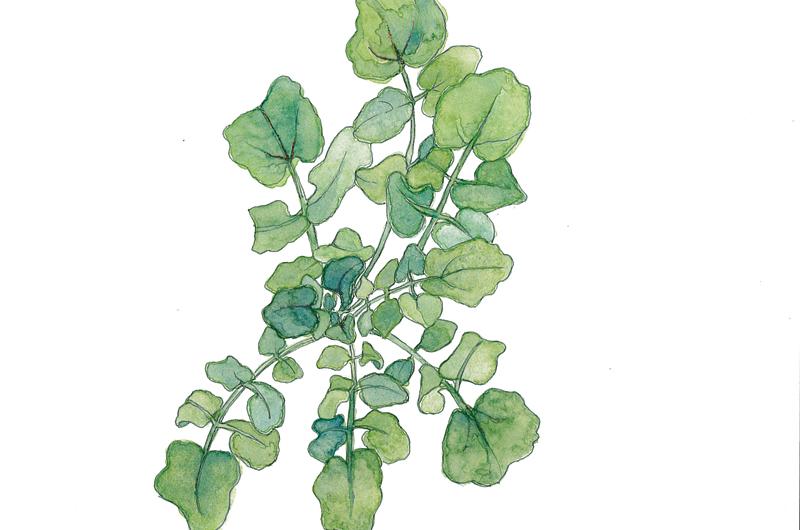(Nasturtium officinale)
Step away from the kale. There’s a new nutrient-dense king in town. In fact, when it comes to the Center for Disease Control and Prevention’s rankings, kale ranks fifteenth on a list of powerhouse fruits and vegetables. Fifteenth! In the number-one spot: delicious watercress, which is packed with vitamins A, K, and C, antioxidants, and minerals. This is extra-fantastic news, since the crisp, peppery greens grow freely throughout the Island. Put on your boots, grab some scissors, and pause to give thanks. You may never have to massage another kale salad again.

Where to look: In early May and June, check slow-moving streams for mounds of bright green oval-shaped foliage atop hollow stems. In concentrated areas these mounds can resemble a shag carpet. Shear the stems; don’t pull from the roots. Watercress will grow throughout the season, but begins to take on a bitter taste by July.
How to use: In the early nineteenth century, Brits reportedly rolled watercress in a cone, called it “poor man’s bread,” and ate it on the run – the first fast food, if you will. Today, they add actual bread and butter and slice it into triangles for a dignified tea-time snack. Stateside, we prefer it in salads, steamed as a side dish, or in soups, where its tangy flavor shines. Of course, Lucy and Ethel sort of liked it in sandwiches, too.
Very tasty, if you like buttered grass.
– Lucille Ball






